NYC Says Goodbye the MetroCard
The MTA will stop selling its iconic yellow metro cards at the end of 2025!


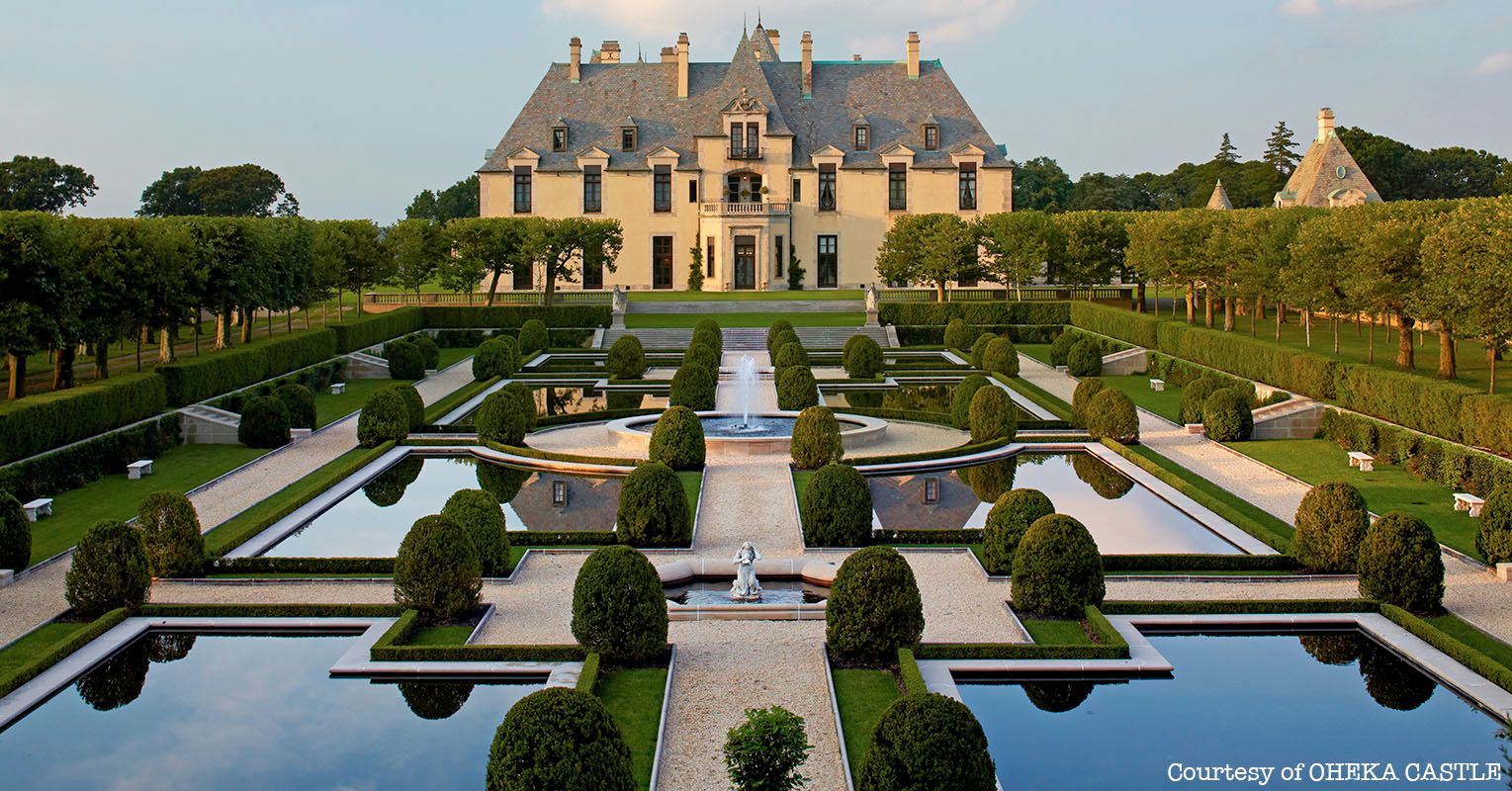
Many speak of the surviving Hudson Valley estates, the Millionaire’s Row Mansions of Fifth Avenue, and even Prospect Park‘s Litchfield Villa. The rarely talked about slew of mansions on Long Island, however, includes Oheka Castle, an extensive chateau only around 35 miles from Manhattan in Huntington, New York.
Commissioned in 1917 by Otto Hermann Kahn, Oheka Castle has rarely strayed from luxury throughout the last 104 years. After Kahn purchased 443 acres of land in Cold Spring Harbor for one million dollars, he later spent eleven million dollars to build the castle, or $158 million today. Architects Delano & Aldrich worked with landscape architects Beatrix Farrand, John Charles Olmsted, and Frederick Law Olmsted, Jr. to complete the castle in 1919.
Kahn passed away in 1934, prompting the need for a new owner for Oheka. After his family sold the French-style chateau in 1939 to the Welfare Fund of Sanitation Workers, the castle had multiple owners until it was abandoned in 1979. These various owners used the house as a retirement home for sanitation workers, a radio operator’s school for the Merchant Marines, and a home for the Eastern Military Academy,
Today, the castle operates as an event venue and rents out hotel rooms. Those who want to get married at Oheka, tour the historic grounds, or spend a night in the lavish interior can do so while living a life of luxury.

The Oheka Castle grounds boast 109,000 square feet of land. Standing in the middle of the 443 acres that Kahn purchased, the castle offers an elegant French garden that opens into a forest of Linden trees. With all of this acreage, Oheka is the second largest private home in America, after the Biltmore estate in North Carolina built by George Vanderbilt.
Although Oheka Castle stands on significantly less acreage than Biltmore, it still houses 127 rooms, a ballroom, a formal dining room, and a greenhouse. Those who wish to tour the grounds can do so for $30 as an adult and $10 as a child.
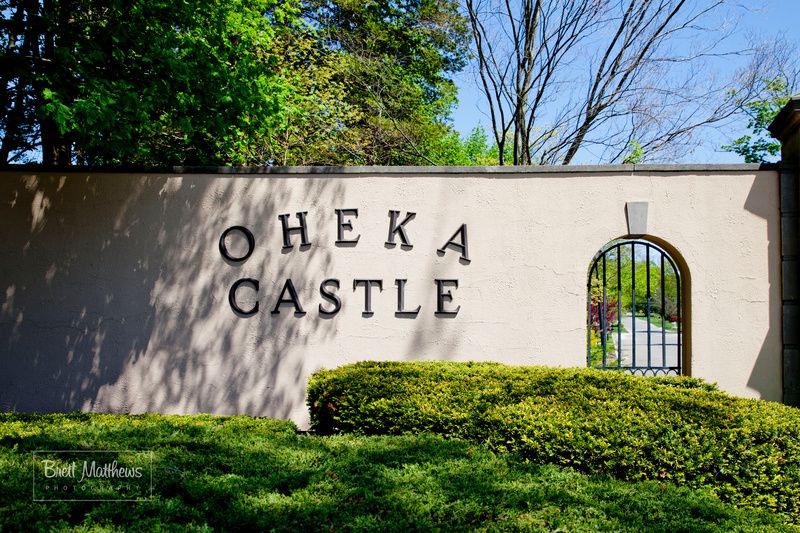
In the two years it took to build Oheka Castle, those in charge of the castle’s construction also built a large hill on which the castle would stand. With the addition of this hill, Oheka Castle became the highest point on Long Island. This title no longer holds.
Jayne’s Hill, which stands between 387 feet and 400.9 feet above sea level is the current highest point on Long Island. Walt Whitman, who was born near Jayne’s Hill, revisited the hill and wrote, “I write this back again at West Hills on a high elevation (the highest spot on Long Island?) Of Jayne’s Hill. . . . A view of thirty of forty, or even fifty or more miles, especially to the east and south and southwest: the Atlantic Ocean to the latter points in the distance – a glimpse or so of Long Island Sound to the north.”

Otto Hermann Kahn was an American investment banker born in Germany. Initially aiming to be a musician, Kahn abandoned his musical dreams to establish himself in American society. However, he became so established that his image is the inspiration for the character “Mr. Monopoly.” The Kahn Family Motto is “Forever Restlessly Forward” for a good reason. To match his reputation, Kahn decided to name his home after himself. Rather than settling for Kahn Castle, Otto Mansion, or something of the sorts, he chose the acronym OHEKA for Otto HErmann KAhn.
However, Kahn had weaknesses disguised in his extensive castle. He used fireproof materials throughout Oheka because he had a fear of fire. As a result, Kahn refrained from using wood at all costs, using plaster instead in his library. He used the “faux bois” technique developed in the Middle Ages to disguise the plaster. Giving the plaster the appearance of warmth and grain characteristic of wood, many people would not know that “Mr. Monopoly” had a fear of fire.
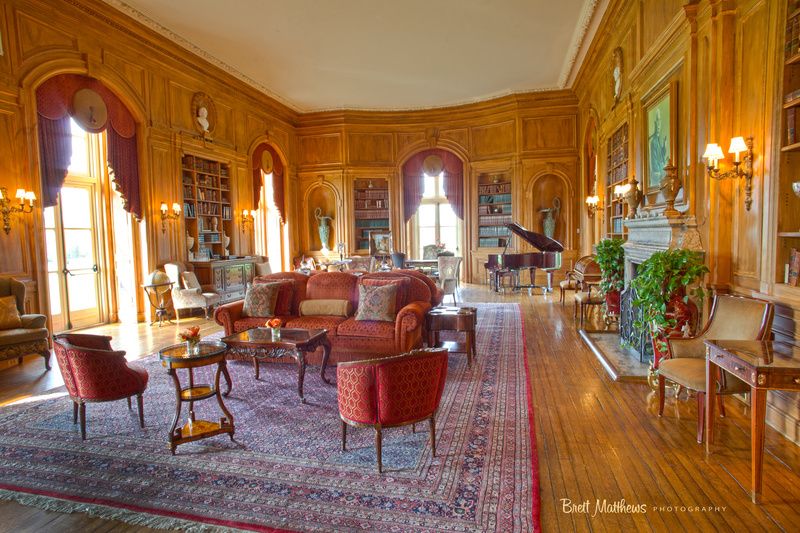
Although it is unclear if this passageway still exists, there once was a secret tunnel in one of the bookcases in Oheka’s library. After finding the passageway, one could travel to a small chamber that acted as the secretary’s office for Kahn.
Today, faux-bois walls still give the library a warm ambiance. However, many of the original features were destroyed during its period of vacancy from 1979-1984. Nevertheless, the castle has since been restored, including the luxurious library. Hotel guests have access to the library lounge.
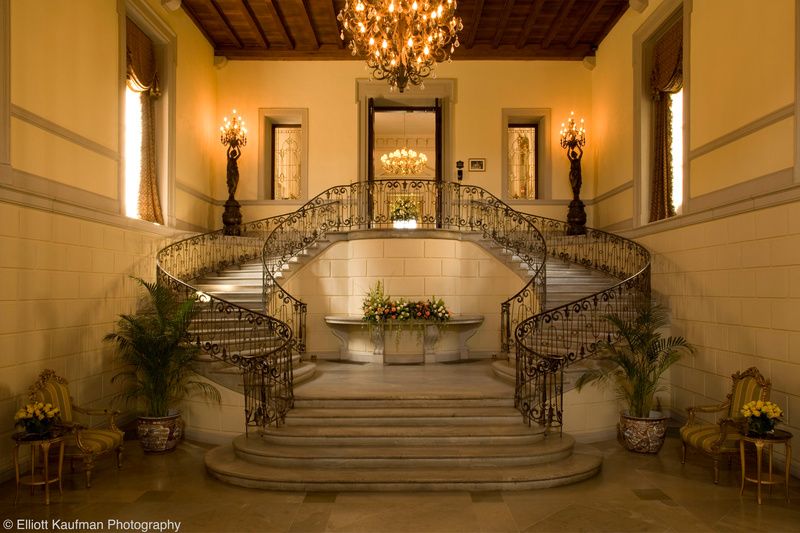
Although the illustrious home of Jay Gatsby in Great Neck is immortalized in American Literature, many Roaring Twenties parties actually occurred at Oheka Castle. With 39 working fireplaces throughout the estate and 129 full-time employees, the castle’s parties exuded wealth and status.
Women dressed in embellished headbands and flapping dresses, trailed by men in carefully ironed shirts and shined shoes, ascended the Grand Staircase in the Entry Foyer of Oheka Castle. Royalty, heads of state, and Hollywood celebrities often frequented these parties, walking the stairs. This Grand Staircase took inspiration from the Chateau de Fountainebleau in France. This chateau located 55 kilometers from Paris served as a home for King Henri IV and Napoleon Bonaparte.
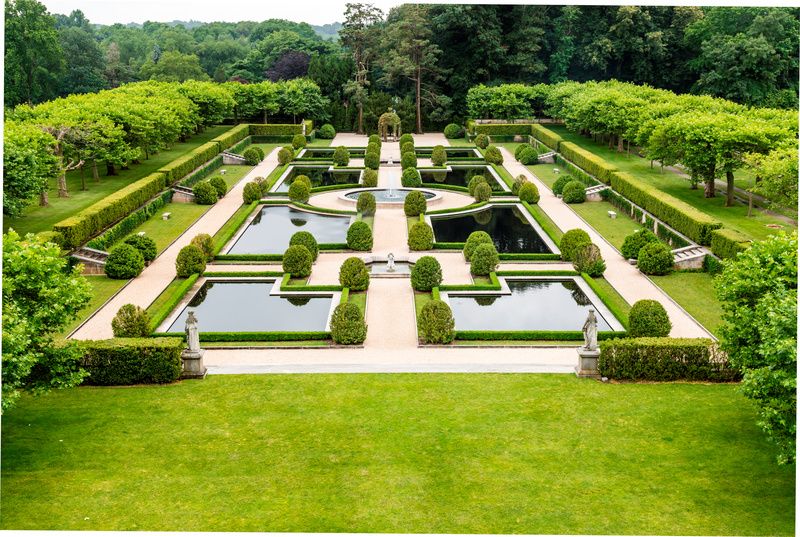
After the Eastern Military Academy went bankrupt, the castle sat vacant. Although the castle was only vacant for five years, more than 100 fires set by vandals left the house in disarray. However, Gary Melius, a Long Island developer, found value in the property. Purchasing the property for 1.5 million dollars, Melius gained control of a once glorious estate that now lacked electricity, plumbing, windows, and doors. As Melius strove to rebuild Oheka, he installed 222 new windows and doors and used 300 thirty-yard containers to rid the castle of its debris. Throughout the course of restoration, the renovations cost $40 million. This is the largest restoration in American history.
Historians and researchers aided renovators in order to maintain Oheka Castle’s history. During the renovation, Melius purchased 4,000 roof slates from Rising & Nelson Slate Co., the same Vermont quarry used by the Kahn family. In addition, 500 Red Cedars now line the West Gate Drive, Forty-four London Plane trees replace those that were lost in the Formal Gardens, and 2,505 Boxwoods have been planed around the reflecting pools. The Friends of OHEKA corporation now works toward protecting, preserving, and raising public awareness for Oheka, an estate on the list of the National Register of Historic Places. With renovations still ongoing, future plans include turning the remaining 15 percent of the estate into a luxury spa.
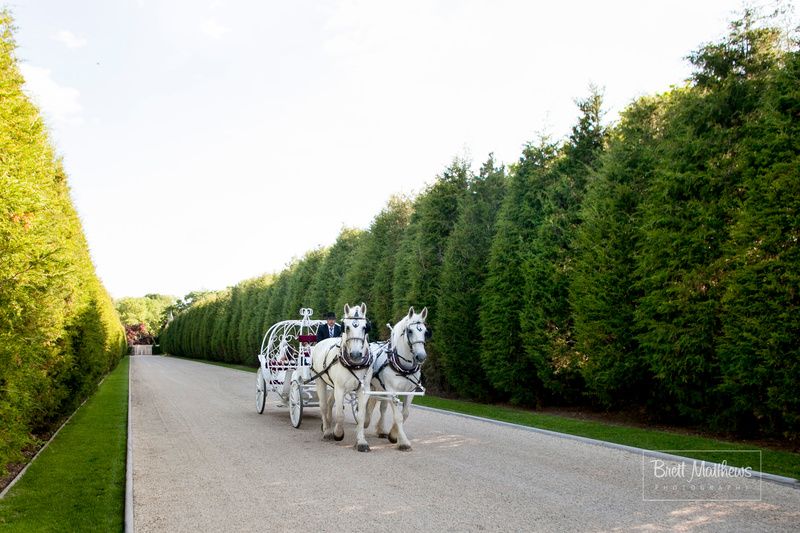
On an unsuspecting Monday afternoon, Melius sat in his Mercedes-Benz in the parking lot of Oheka Castle. Out of nowhere, a masked gunman approached Melius’s vehicle and shot him in the head through the window. The headshot did not instantly kill Melius, allowing him to reach his daughter in the mansion. She quickly rushed him to the emergency room where he received emergency surgery and treatment.
Although Melius survives to this day and the assassination attempt was captured on video, the masked gunman has neither been arrested nor identified. After the gunman fired three shots, one of which hit Melius, he fled the scene. Melius released an $100,000 reward for whoever found the hitman.

Oheka Castle offers six types of rooms for guests to stay in. The cheapest rooms, the chateau rooms, find inspiration from the chateau style of the castle. In contrast, the most expensive room is the Olmsted Suite. Inspired by the Olmsted Brothers who designed the garden of Oheka Castle, the room’s two balconies overlook the gardens and their reflective pools.
Other suites include the Whitney Rooms, the Fairbanks Suites, and the Carnegie Suite, inspired respectively by Harry Payne Whitney, Douglas Fairbanks, and Andrew Carnegie. The Gatsby Suites, in turn, honor the era of the roaring twenties in which Kahn built the house.

Oheka Castle’s picturesque design renders it perfect for the backdrop of a movie, TV show, music video, or photoshoot. First appearing in Citizen Kane in 1941, OHEKA has appeared in three films since. From The Emperors Club to The Great Gatsby Documentary to What Happens in Vegas, the luxury of Oheka has been immortalized. Other TV shows such as Gossip Girl, Lifestyles of the Rich & Famous, and Madam Secretary have paid homage to the lavishness of the castle.
Taylor Swift stands atop the Grand Staircase in Oheka singing, “Oh my god look at that face,” in her “Blank Space” music video. As she roams through the lavish interior rooms of the castle and the extravagant grounds with the featured man in the video, she takes advantage of all the picture-ready locations on property.
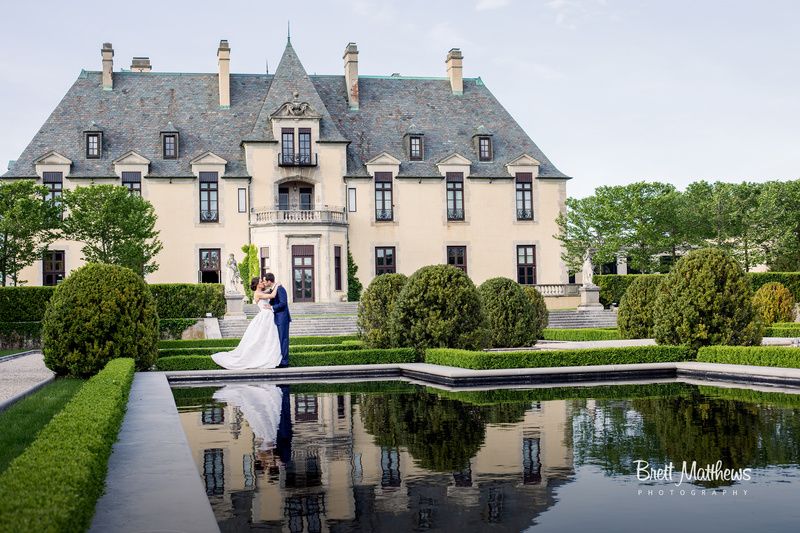
Oheka Castle’s first bride was Maud Emily Wolff Kahn, Otto Kahn’s daughter. Since her marriage on June 15, 1920 to John Charles Oakes Marriott, various weddings have occurred at Oheka. Despite a brief interlude during Oheka period of vacancy, the site hosted its first wedding following renovations on May 7, 1987.
Maksim Chmerkovskiy and Peta Murgatroyd, Dancing with the Stars ballroom dancers, got married there in 2017. Kevin Jonas and Danielle Deleasa also married on Kahn’s stomping grounds, bringing all the brothers to the property. Joey Fatone, a singer in NSYNC, had his wedding at Oheka in 2004.
Next, check out more Gold Coast Long Island Mansions and along with dozens of Gilded Age udson Valley Estates!
Subscribe to our newsletter